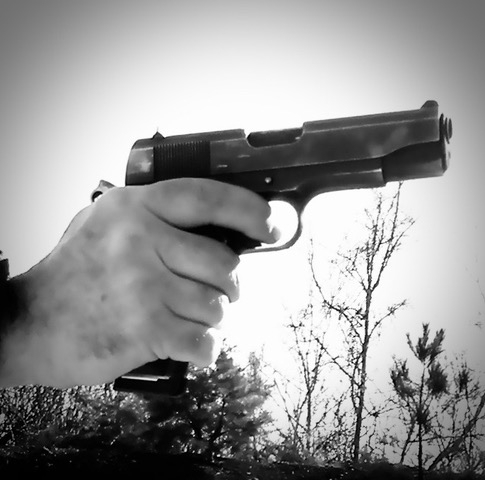 |
In every class, students ask me, “What do you practice?” Since I recently detailed what I carry -- I thought it is a good time to list what I practice. This is by no means a complete, comprehensive list. These are the skills I spend the most time practicing, and most importantly, why.
Drawing the pistol while moving is number one on my list. The fundamentals of responding to a threat are Move, Communicate, Use Cover, Shoot – if necessary – and Think, in order to solve the problem. Drawing the pistol from concealment - just like I carry every day -- factors heavily in my practice.
Moving in response to danger goes against every natural instinct we’re programmed with. When something sudden and unexpected occurs our response is to freeze and try to figure out what’s going on. When we decide to fight there’s a tendency to want to root to the ground. Reprogramming, and plenty of practice is required to over-ride this inclination to plant and stick in place. I think about it this way. If I need to draw my pistol, chances are high I need to be moving.
I put a lot of time into practicing moving and drawing from concealment. Sometimes I’ll present onto target, other times it’s to a low-ready. It’s a bad habit to come on target every time you present the weapon. The situation may require you to draw to the low ready. You’ve decided chances are high there’s going to be a problem. If things do go bad, it’s a good idea to already have pistol in hand. Plus, most situations will call for verbal commands to the threat – Communication. And who knows, the presence of the weapon and verbal commands may produce a “psychological” stop. Your reaction to the threat changed their mind about what they thought they were going to do.
Next on the list is malfunction clearances. Stoppages occur much more often in fights, where conditions are far less than perfect, than on they do on the range. Keep in mind that most stoppages are operator induced. You’re in a less than perfect firing position and the pistol doesn’t have the resistance it needs to function. You fail to seat the mag aggressively or cycle the slide forcefully. Sometimes, Murphy’s Law kicks in, and a firing interruption occurs, seemingly for no reason. Malfunctions are always unexpected. A stoppage could occur on the first, second third or so on shot you attempt to fire.
Most all our pistol hold enough ammo to solve a defensive problem. An empty reload probably won’t be the deciding factor in your fight. The ability to clear a stoppage may well be the difference between life and death.
Hand and arm injuries occur a lot in fights, too. Someone tries to hit you with a baseball bat, and your arm is injured trying to block the strike. They’re trying to cut or shoot you, and your hand or arm is injured. And just because you’re injured doesn’t mean you’re out of the fight. I put a lot of time into “Injury” drills. For example, I draw – again while moving – and fire a couple of shots using both hands. Then, I transition the weapon to the support hand to fire two. The drill ends by shifting the pistol to the strong hand for two rounds. When I run empty the reload is performed in whatever mode I’m firing from – one hand, the other or both. To work stoppages I mix dummy rounds into the mags.
Conflict rarely goes the way you think it should. The unexpected constantly occurs. My goal is to prepare for the unpredictable. Danger occurs, suddenly and without warning. I’m moving and drawing. A stoppage occurs, but I’ve practiced this and I’m ready. I’m injured in one hand or arm. No problem, I’m prepared. Practice must include preparing for the “bad.” That way, when it does happen it won’t be as “bad.” Study this well.
Tiger McKee is director of Shootrite Firearms Academy, which is celebrating its twenty-fifth anniversary. He is the author of The Book of Two Guns, AR-15 Skills and Drills, has a regular column in American Handgunner and makes some cool knives and custom revolvers. Visit Shootrite’s Facebook page for other details.